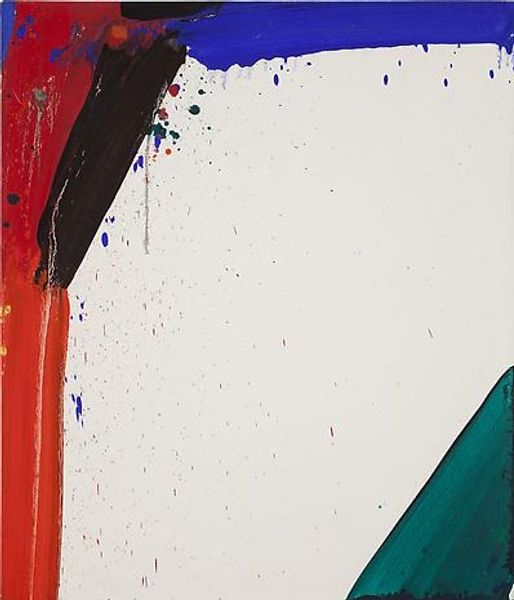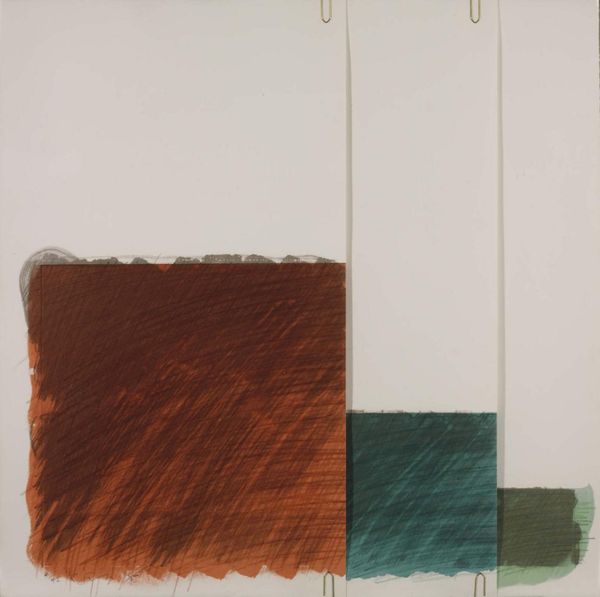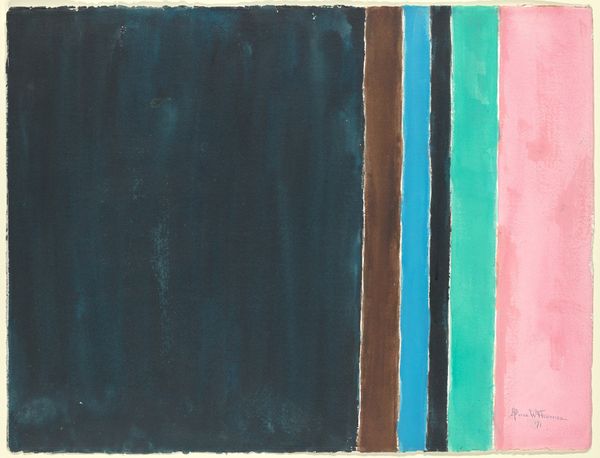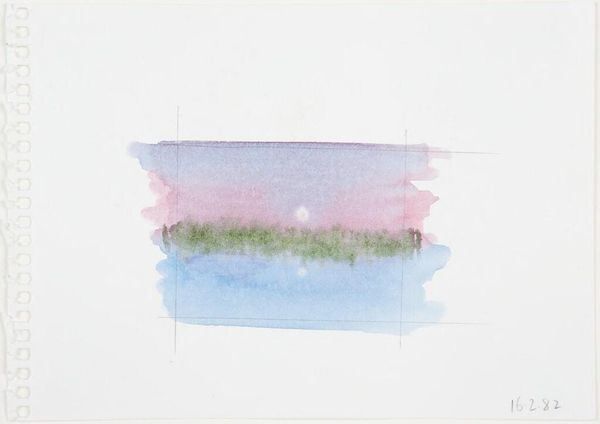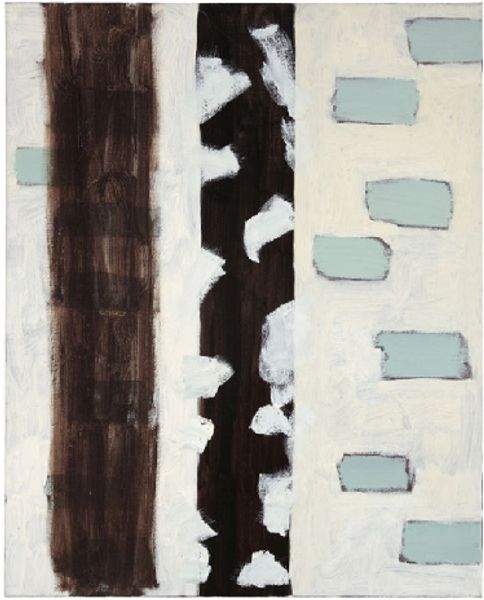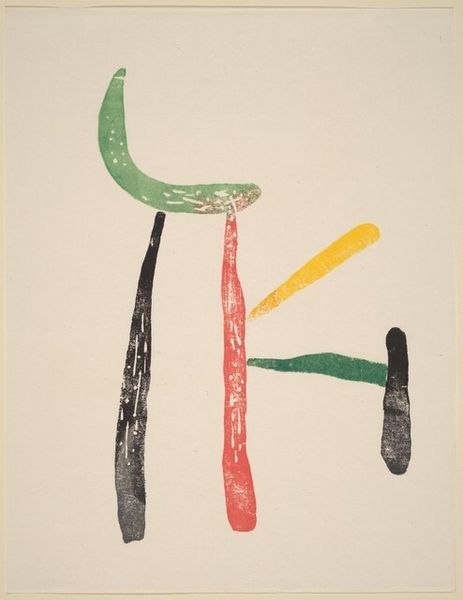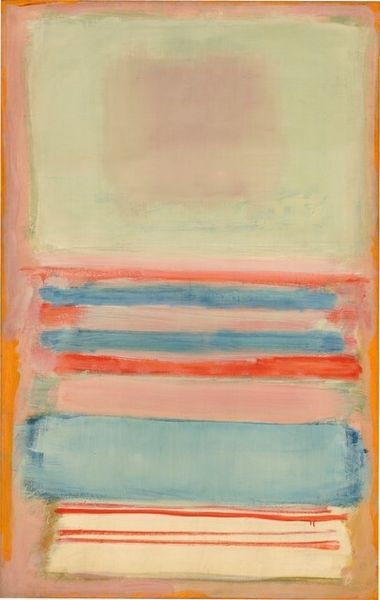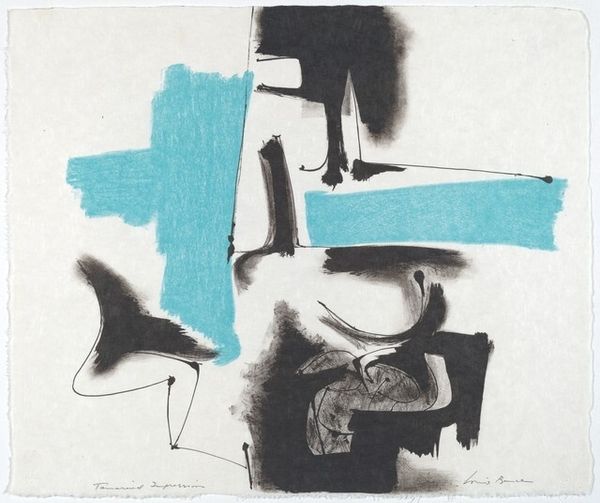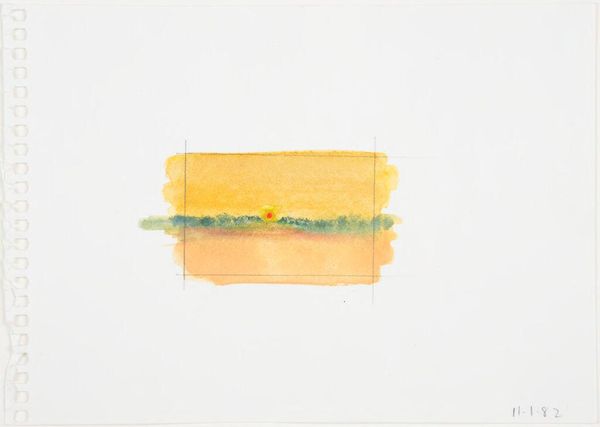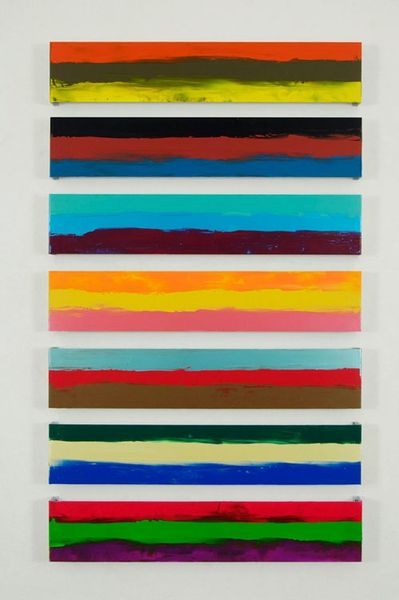
drawing, paper, watercolor
#
drawing
#
water colours
#
paper
#
watercolor
#
abstraction
#
line
#
modernism
#
watercolor
Dimensions: overall: 57 x 75.6 cm (22 7/16 x 29 3/4 in.)
Copyright: National Gallery of Art: CC0 1.0
Curator: Right now, we're looking at Jacob Kainen’s "Cressida" created in 1983. He worked with watercolor and other drawing media on paper. What's your initial take? Editor: Hmm, interesting... My first impression? Quiet rebellion. It looks deceptively simple, but something about the contrasting strokes – the rigidity against the almost playful color fields – feels like a controlled explosion. Curator: Absolutely. And the title, "Cressida," adds another layer, doesn’t it? In mythology and literature, Cressida is a figure associated with betrayal and changeability. I wonder what she represents here in these marks? Is it something unstable, or is there also strength here? Editor: Maybe Kainen is playing with those interpretations. The strong vertical lines almost seem to be fencing in these translucent green and pink watercolor splashes. The upright lines almost speak about keeping the Cressida-energy controlled or even trying to define the limits of betrayal. Curator: The limited palette reinforces that controlled feeling, doesn't it? These restrained color choices guide your eye carefully, as does the texture of each line. What would you say about them? Editor: The lines...they're so varied. Some solid, some trembling, others barely there. Look at that thin gold one almost disappearing behind the green mass to the right. The gold almost feels precious. What is it doing behind that opaque color? Curator: It's almost a hidden infrastructure, you think? Kainen's mark-making carries echoes of both modernism and an older calligraphic sensibility. The image becomes a stage for the movement between form and gesture. It's about both intellect and something felt very intensely. Editor: Exactly! And perhaps that’s where Cressida resides – not just in the betrayal but in the tightrope walk between thought and emotion, constraint and expression. Even, maybe, between order and chaos, each leaning into the other, the pink to its boldest and blackest counterparts, a way to say opposites can complete each other? Curator: It’s funny—after spending so much time looking at it, “Cressida” now feels like a mirror, reflecting not a specific story, but the ongoing negotiation of our own internal complexities. Editor: And now I can’t unsee the suggestion of a path. Fascinating how a few lines can evoke a world of narratives and emotional weather.
Comments
No comments
Be the first to comment and join the conversation on the ultimate creative platform.
